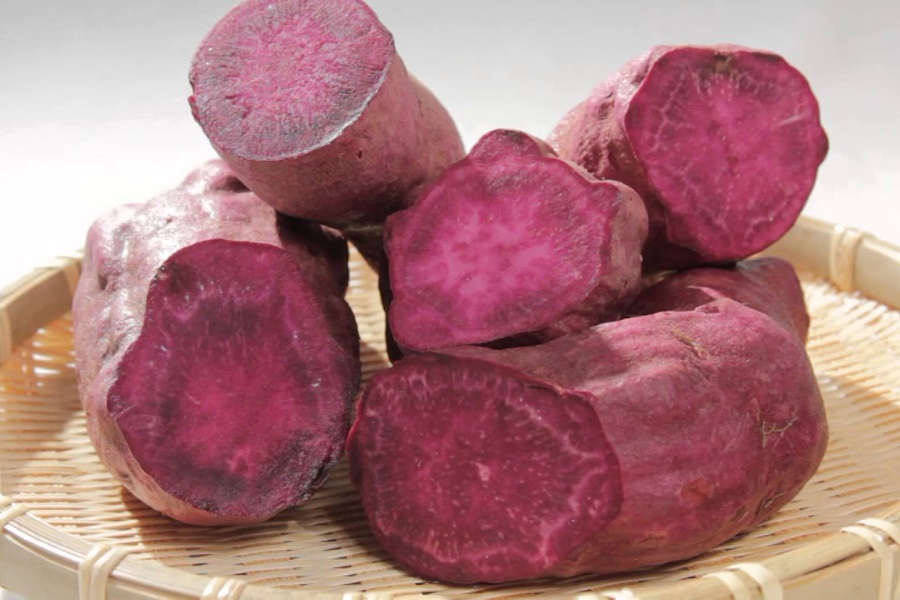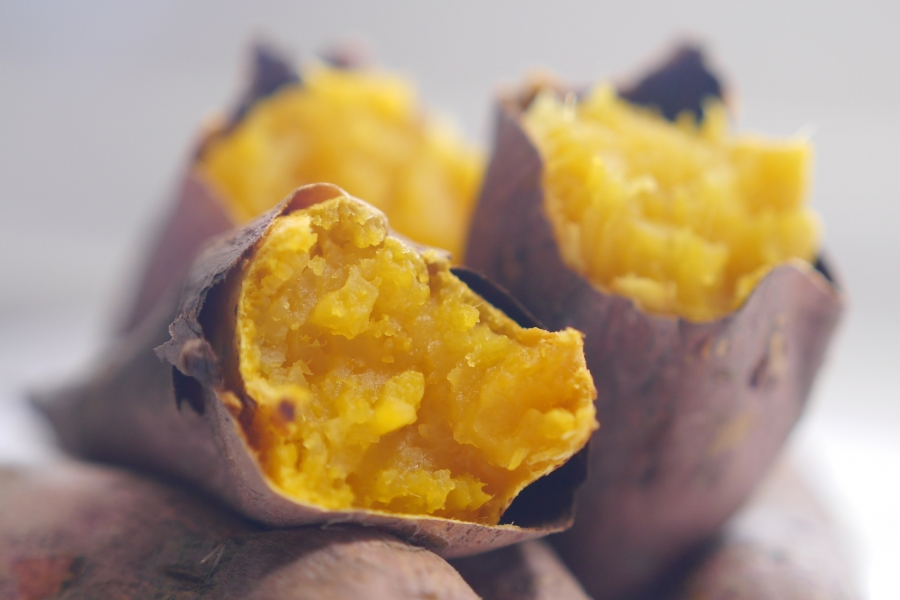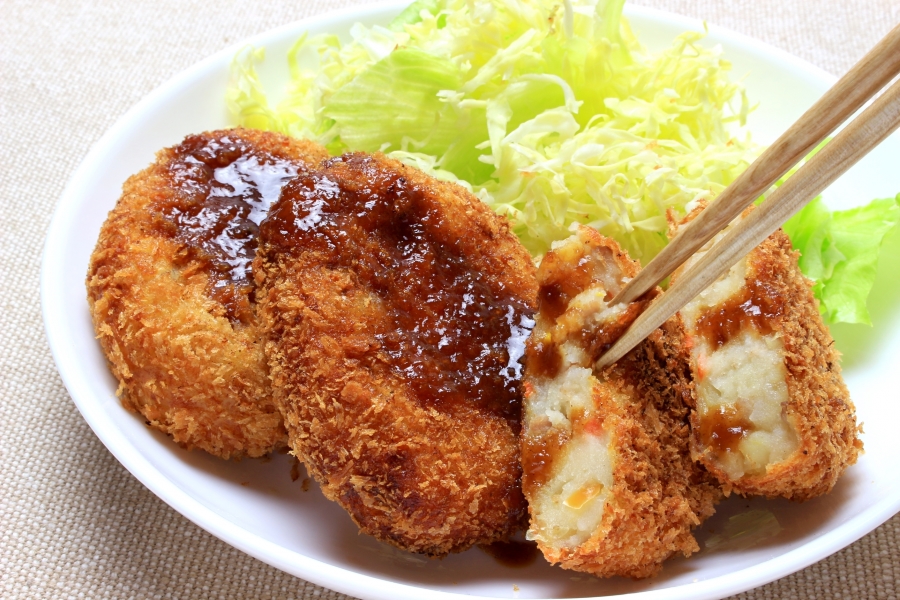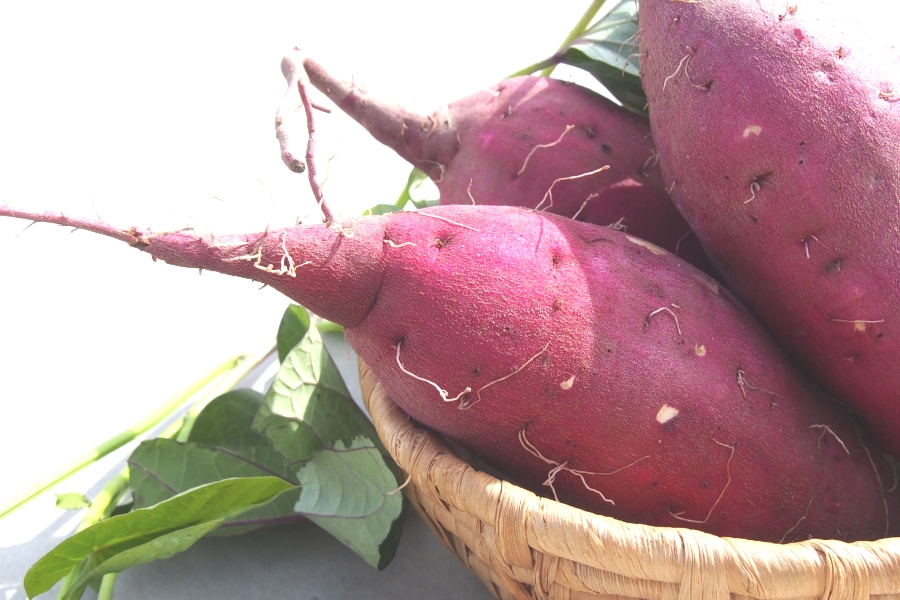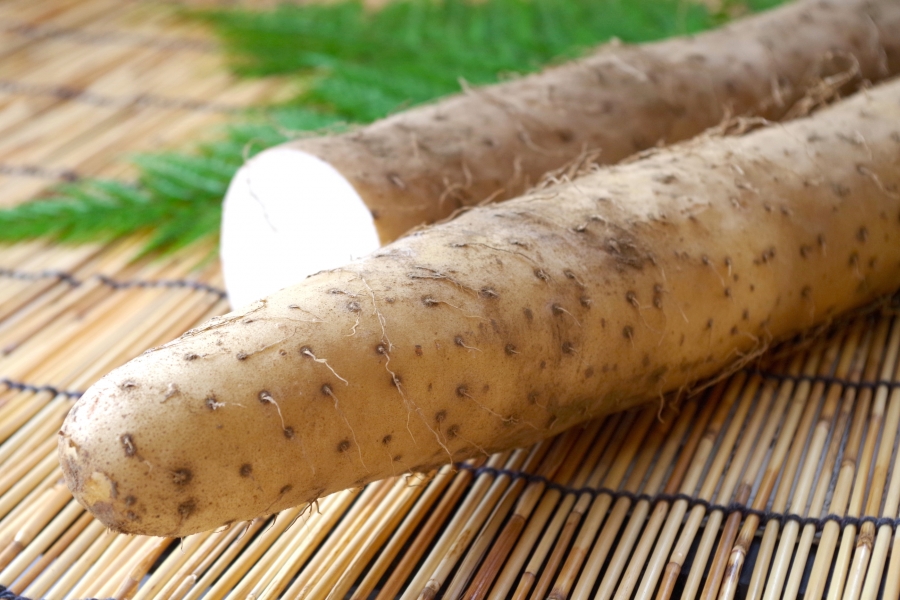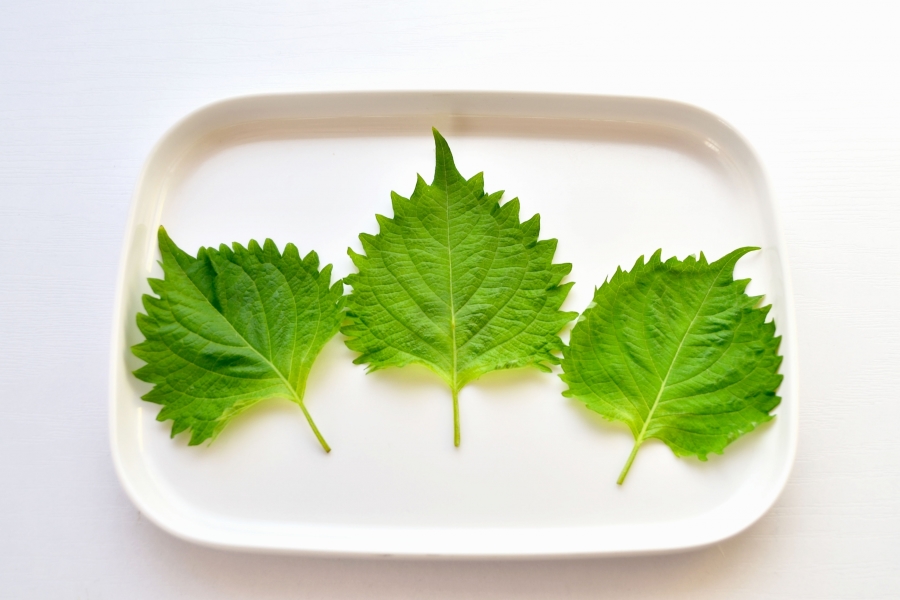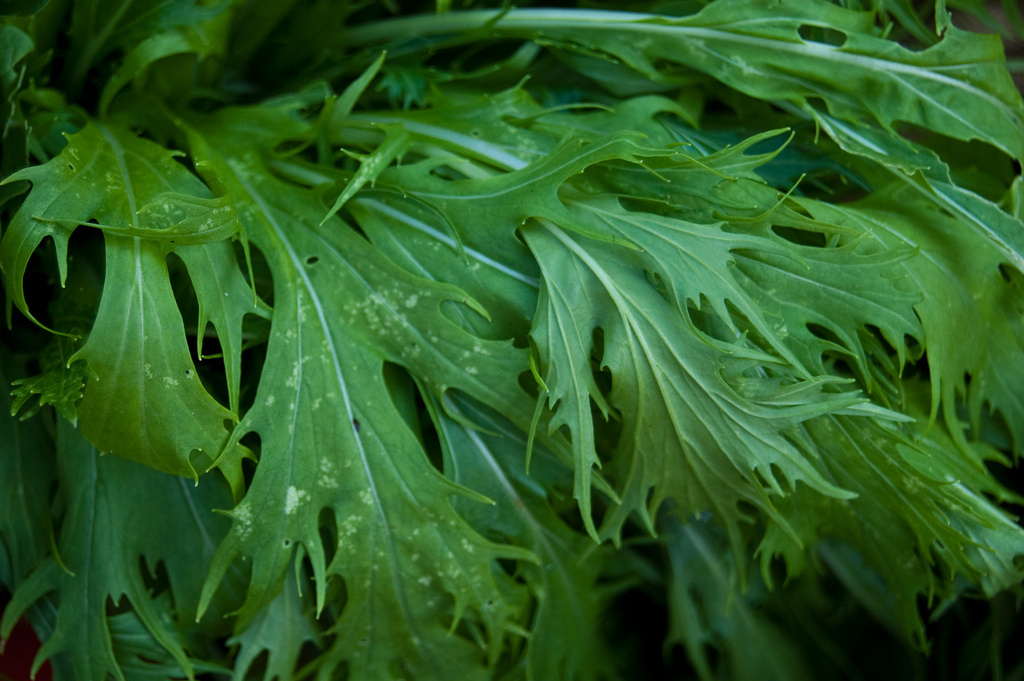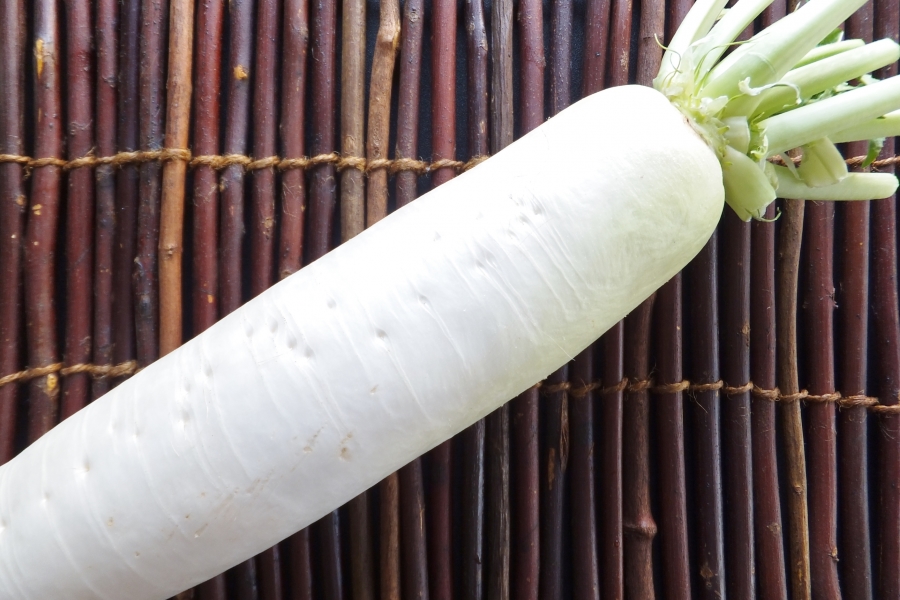A New Breed of Murasaki-imo Everyone Is Talking About: “Purple Sweet Road” At Nijiya, you find satsuma-imo shipped directly from Nijiya Farm. As you cut into the deliciously purple skin of this satsuma-imo, you find that the meat is also a beautiful purple color. The vivid purple color is due to B carotene and anthocyanin pigment, which is a type of polyphenol. It sounds good for the body, doesn’t it? Called “Purple Sweet Road,” this particular murasaki-imo (meaning “purple potato” in Japanese) is a new breed of potato registered in 2006. A cross between Naruto-kintoki and murasaki-imo, Purple Sweet Road combines the taste of Kintoki and the nutritional value ofmurasaki-imo. The pretty purple color is one secret of the popularity […]
Contents: Japanese Dried Vegetables Let’s Make Dried Vegetables! The benefits of dried vegetables Why not try this once you’re familiar with the process! Japanese Dried Vegetables Dried shiitake mushrooms and kiriboshi daikon (dried, shredded daikon radish) certainly come to mind when you think of dried vegetables. They are among the ingredients treasured for their long shelf life and increased nutritional value in dehydrated form. Dried vegetables like these are quietly gaining attention. That is because you can easily make them in a small, sunny space in your garden or on your patio without the need for special tools. The dehydration process removes water content from the vegetables and condenses their natural flavors, so they taste even better than in its […]
Kanpyo is an indispensable ingredient in Futomaki (thick-roll) sushi rolls. Although it appears plain and nondescript, being thin and stringy with no body, when you know more about kanpyo, I guarantee that you will love it and want to eat more of it. Contents: What is Kanpyo? How is Kanpyo Prepared? Nutritional Value Preparation Kanpyo Recipes What is Kanpyo? Kanpyo is the shaved flesh of the bottle gourd dried into thin strips. The white, tidy flowers of the bottle gourd bloom on a summer evening and wither overnight. Contrary to this fleeting image, the vines are full of vigor growing as tall as 20 meters, and the flesh is said to grow as big as 6 to 7 kg. (13 […]
Contents: The Story of Yakiimo The Birth of Yakiimo Healthy Snack How to Roast Yakiimo Health Benefit of Yakiimo Kinds of Sweet Potatoe The Story of Yakiimo We are amazed at the varieties of yakiimo that have become available in recent years, with their delightful aroma of malt sugar and as sweet and tasty as cake. Improvements in the breeding of sweet potatoes, advancements in cultivation, curing, and storage technologies, and extensive research in roasting are behind the evolutionary changes of yakiimo. The traditional types of yakiimo include potatoes roasted to the smooth, slightly dry texture favored in Kanto and those with the softer, moister texture eaten in Kansai and the south. With the availability of Naruto Kintoki, Beni Haruka, […]
Kiriboshi-daikon is daikon (Japanese radish) that has been thinly sliced and sun dried. Bathed in sun, the strips increase in sweetness and nutritional value. Contents: What is Kiriboshi-Daikon? Kiriboshi-Daikon Recipe Kiriboshi-Daikon & Canned Tuna Salad Recipe Light Kiriboshi-Daikon Salad Recipe What is Kiriboshi-Daikon? When compared to the same weight of raw daikon, kiriboshi-daikon contains fifteen times more calcium to strengthen bones and teeth, 32 times more iron to prevent pernicious anemia, and ten times more vitamins B1 and B2 to support metabolism. Because the volume decreases to approximately one tenth when dried, kiriboshi-daikon is a more efficient way to absorb nutrients. As a rich source of dietary fiber, it improves digestion and promotes beautiful skin. Kiriboshi-daikon is effective in weight-loss […]
Contents: How Do You Want to Make It Today? Potato Croquettes Recipe How Do You Want to Make It Today? You can cook croquettes in various ways, depending on your goal: “time saving,” “best to eat as soon as cooked,”” delicious even when cold,” and “non-fried.” Here are some cooking tips: Choosing the Ingredients Potatoes: Russets or a similar variety, which become fluffy when cooked, work well for croquettes. Generally speaking, waxy potatoes such as Yukon Gold and red potatoes become gluey when cooked, so they’re more suitable for a sinm1ered dish than for croquettes. Onion: The yellow onion is the best cooking onion. Ground meat: Use beef, pork, or a mixture of the two, depending on your preference. Oil […]
Matsutake is a wild seasonal mushroom having an intense aroma, distinctive texture and natural flavor. Matsutake, grows in relatively dry soil containing few nutrients. It is found in the autumn in single-tree forests of Japanese red pine, Yezo spruce (Picea jezoensis), etc., or in mixed forests of primarily needle-leaved trees. Contents: What are Matsutake Mushrooms? How to prepare Matsutake Musrooms? Let’s taste Matsutake Mushroom simply and originally! How to cook Matsutake Mushrooms? What are Matsutake Mushrooms? The relationship between the Japanese people and mushrooms has a long history. Many pieces of mushroom-shaped earthenware have been found in ruins of the Middle Jomon Period (3500-1500 B.C.E.). The Japanese classic Manyoshu poetry anthology contains tanka (thirty-one syllable poems) featuring the matsutake mushrooms […]
Kabocha can be harvested twice a year, in the spring and fall, but the latter is its peak season. Harvested kabocha can be stored for a period of over a month to enhance its sweetness. Those harvested during the peak season undoubtedly taste better. Contents: A Flavor of the Earth Would you like some delicious Kabocha? How to cook Kabocha (Japanese pumpkin recipes) A Flavor of the Earth Did you know there was once a custom in Japan based on the saying that “eating kabocha with shiruko (sweet soup made from azuki beans) on the winter solstice will prevent common colds?” Not many people would know about such a thing these days. Around the winter solstice – the time of […]
The sweet potato (satsuma-imo) is native to Mexico and the surrounding tropical American region. Diploid Ipomoea trifida, which belongs to the family Convolvulaceae, has been identified as a wild ancestor of the sweet potato. Today’s sweet potatoes are believed to have been developed through artificial selection as a result of mutation and cross breeding with wild species. Whether artificial or spontaneous, a great number of sweet potato species have been created throughout the long history of its cultivation. Different regions grow varieties befitting their geographical needs. In fact, sweet potatoes are grown in most of the tropical, subtropical and temperate zones around the glove today. For that reason the sweet potato comprises an astonishing array of varieties, with new types […]
Eggplant, a tropical plant, is said to have originated in eastern India. A long time ago the plant was brought into southeastern Asia, but there is no record to indicate exactly when that was. In Japan, eggplant is believed to have a 1,200-year history and used to be called “nasubi.” Today there are numerous eggplant varieties throughout the world. In Japan alone, there are various names or shapes of eggplants that are of local origins. For example, “Kamonasu” is the famous, smaller-sized, round eggplant originated in Kyoto. Contents: Why is fall eggplant so delicious? “Organic Eggplant” How to Cook Nasu? (Eggplant Recipes) Why is fall eggplant so delicious? Why is fall eggplant so delicious? Eggplant is generally considered to be […]
Molokhia is a vegetable that has been widely eaten in Egypt and India, among other regions, since ancient times. Molokhia means “vegetable of kings” in Arabic. It’s believed to have been given that name because it’s so nutritious that it even cured the diseases of the kings. Contents: Molokhia -Sticky, Slippery Power of the Summer Molokhia (Jew’s Mallow): A Summer Vegetable Pursuing a Molokhia Growing Opportunity in Southern California Growth of Molokhia Artificial Light Culture Nutritive Value of Molokhia How to cook Molokhia? (Molkhia Recipes) Molokhia -Sticky, Slippery Power of the Summer True to its legacy of sustaining the health of kings, molokhia offers a great variety of outstanding nutrients such as vitamin B1, vitamin B2, vitamin B12, vitamin C, […]
Nagaimo is a root vegetable from the family Dioscoreaceae. There are three major groups of yams generally referred to as “yamanoimo” (Dioscorea japonica): yamanoimo, jinenjo (Japanese yam), and daijo (water yam). Yamanoimo have been consumed in Japan since the olden days. Contents: About Nagaimo (Japanese Yam) Nutritional Value of Nagaimo Handling Nagaimo How to cook Nagaimo? (Japanese Yam Recipes) Tofu Salad with Avocado and Mountain Yam Recipe Nagaimo-no-buta bara maki (nagaimo wrapped with boned pork ribs) Recipe Deep-Fried Nagaimo Recipe Nagaimo Negi-yaki (green onion-grilled nagaimo) Recipe Nagaimo Juice Recipe About Nagaimo (Japanese Yam) Raw grated nagaimo has a unique sticky texture. Nagaimo transforms plain rice and noodle dishes into special treats such as mugitoro-gohan (a bowl of boiled rice and […]
How Bean Sprouts are Made Bean sprouts have been prized since ancient times, not only in Japan but also in China, Korea and Southeast Asia, as a remarkable food that helps build the body. Now that bean sprouts can be mass-produced in factories, they’re back in the spotlight as a hygienic, safe sprout vegetable. They can be produced with great flavor and abundant nutrition regardless of the season, and are grown using only fresh water with no chemical fertilizers or pesticides. Nutritional Value of Moyashi Bean sprouts are an extremely healthy food bursting with a variety of nutrients. As bean sprouts grow, latent nutrients, such as the starch, fat and protein stored in its seed, are hydrolyzed, releasing energy while […]
Oba is known as one of the Japanese aromatic vegetables. It has a more elegant aroma and a more subtle flavor than Western herbs, and is an essential ingredient in Japanese cooking. Oba goes perfectly with sashimi and sushi. Contents: Oba -Japanese Aromatic Vegetable- How to Cook Oba? (Green Perilla Recipes) Oba -Japanese Aromatic Vegetable- The food you prepare turns out differently when you use aromatic vegetables. The aromas of aromatic vegetables boost your appetite and help you enjoy the taste of food. Aromatic vegetables often play supporting roles as condiments, but their presence cannot be overlooked. In fact, the nutrition these vegetables provide is as powerful as that of other vegetables used as main ingredients. The world of cooking […]
Among summer vegetables, this bumpy, warty-skinned vegetable is a relative newcomer. In the past few years, however, goya’s health-enhancing properties have drawn attention throughout Japan. Because goya can be grown in home gardens during he peak summer season, it has become a popular vegetable. In fact, goya is now so popular that its seeds sell out quickly at garden centers. Contents: Goya (Bitter Melon), a Summer Vegetable A Shade-Producing Plant that Can Block Sunlight Nijiya Farm’s Organic Goya Nutrients of Goya Basic Cooking Preparation for Goya How to cook Goya? (Goya Recipes) Goya (Bitter Melon), a Summer Vegetable In Okinawa, known for the longevity of its population, goya has been a regular part of the diet for a long time. […]
Get a lot of energy from sprouts! Kaiware daikon is the Japanese name for new shoots of the Japanese radish. Daikon (Japanese radish) has long been grown in Japan. It’s believed that the Japanese began eating kaiware daikon in the Heian period (794-1185). Kaiware daikon used to be considered a luxury food because it was cultivated by hand planting each radish. These radish sprouts became more widely used after commercial hydroponics was successfully developed in the early 1960s. It quickly became a familiar vegetable, appearing on the dinner tables of general households. This vegetable has a unique pungent flavor and provides detoxifying and disinfecting effects. Kaiware daikon is essential in Japanese cuisine as a garnish to sashimi and an addition […]
When it comes to enjoying fall flavors, mushrooms are an obvious choice. Although there are many varieties of edible mushrooms, generally they can be divided into saprobic fungi and mycorrhizal fungi. Saprobic fungi include wood-rotting fungi, which grow out of the trunks of living trees. Most of the mushrooms that can be cultivated are saprobic fungi; they break down fertilizers and the trees on which they feed. Wood-rotting fungi include shiitake, maitake, nameko, enokidake, buna-shimeji, hiratake, and eringi. White mushrooms and Agaricus do not grow out of trees but are still considered saprobic fungi. Contents: Matsutake Mushrooms Kinkatsu (A healthy life with microorganisms) How to cook Kinoko? (Mushroom Recipes) Matsutake Mushrooms “Matsutake” is definitely the king of mushrooms. It is […]
Mizuna belongs to the Brassica family and is a type of mustard like komatsuna, takana, and daikon. Contents What is Mizuna? Mizuna in the U.S. Nutritional Value Texture and Taste Cultivation of Mizuna Organic Farming What is Mizuna? Mizuna has been a popular vegetable in Japan since ancient times. Many people enjoy the pungent kick of mizuna. With its powerful antioxidants, mizuna has long played an important role in the health of the Japanese people. It is said that mizuna originated in Japan, where cultivation began in the Heian period (794 – 1185). Today, mizuna is a designated kyo-yasai (a vegetable certified to be from Kyoto). The popular mustard leaves that grow abundantly in Kyoto are a fixture in kyo-ryori […]
Daikon (Japanese radish) is a typical winter vegetable. Even though it’s available throughout the year, winter is when daikon is at its tastiest. Besides being tasty, daikon has many therapeutic properties. So, organically grown daikon would be the better choice. Contents: What is Daikon Radish? Daikon Radish is an Outstanding Digestive Aid and Improves Blood Circulation. To Get the most out of Daikon Radish, Apply the most Suitable Cooking Method to Each Part. Don’t Waste the Skin! Leaves are Also Very Nutritious! How to Cook Daikon Radish? (Japanese Daikon Recipes) What is Daikon Radish? Organic Daikon – Let’s enjoy every part of it! The most widely known Japanese daikon radish is the Aokubi daikon. It has a less peppery flavor […]
Shiitake mushroom is a specific mushroom that is grown on a shii-tree (Castanopsis cuspidata, or Japanese Chinquapin). Contents What are Shiitake Mushrooms? Shiitake Mushrooms Nutrition Health Benefits of Shiitake Mushrooms Choosing and Preparing the Right Shiitake Mushrooms What are Shiitake Mushrooms? Mushrooms have been widely consumed all over the world as a delicacy and also for health benefits. Aside from the inedible toxic mushrooms, mushrooms have been a big source of food in over 60 countries around the world. Most mushrooms grow on dead trees, absorbing as much UV light as possible. Because of that, mushrooms are known to have a lot of vitamin D, a key vitamin for human growth. Of the many edible mushrooms that you may have […]
What is Miso Soup? Traditionally many fermented products have been eaten in Japan, because the climate encourages the growth of microorganisms. These fermented products reflect the wisdom Japanese people accumulated over centuries of experience. In particular, the idea of fermenting soybeans, which are rich in nutrients but difficult to digest, has created natto (fermented soybeans), soy sauce and miso (fermented soybean paste). As they say, “A bowl of miso soup a day keeps the doctor away”. Miso has been a health secret of the Japanese for many years. Why don’t we review our basic diet and add miso soup to our daily menu? Tofu Miso Soup Recipe Grilled Mochi and Leafy Green Miso Soup Recipe Clam Miso Soup Recipe Tonjiru […]
Gari (pickled ginger) is thinly-sliced, sweetened pickled ginger and is an indispensable garnish with sushi. Because its crispy texture and refreshing and piquant taste eliminates the smell of fish, it makes sushi consumption an enjoyable experience. When eaten between bites of sushi, it cleanses and renews the palate. Contents “Sushi shoga = ginger” may be the more familiar term in America. How to Make Homemade Gari (Japanese Pickled Ginger) How to cook Gari? “Sushi shoga = ginger” may be the more familiar term in America. Demand for gari has rapidly increased along with the sushi boom in America. It is safe to say that the appreciation of gari has already spread among others besides Japanese. It appears that the origin […]
